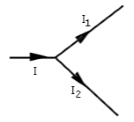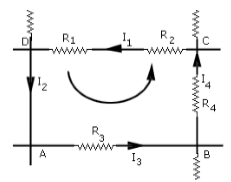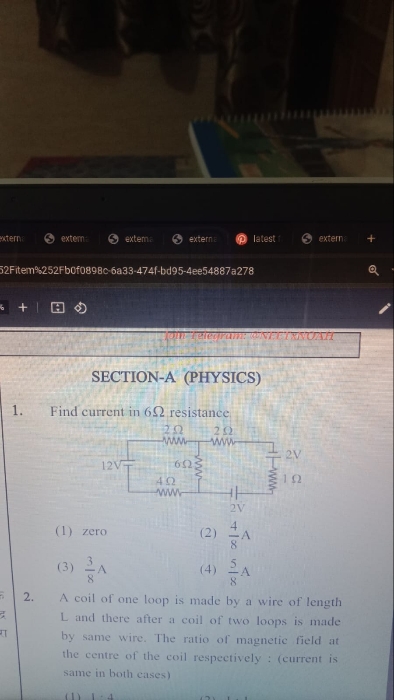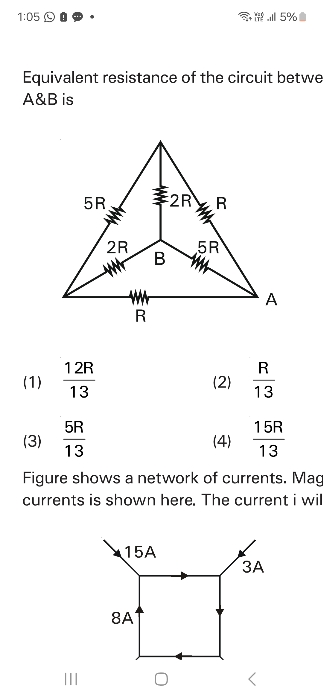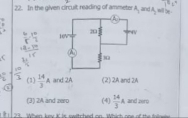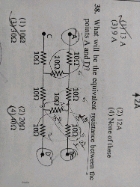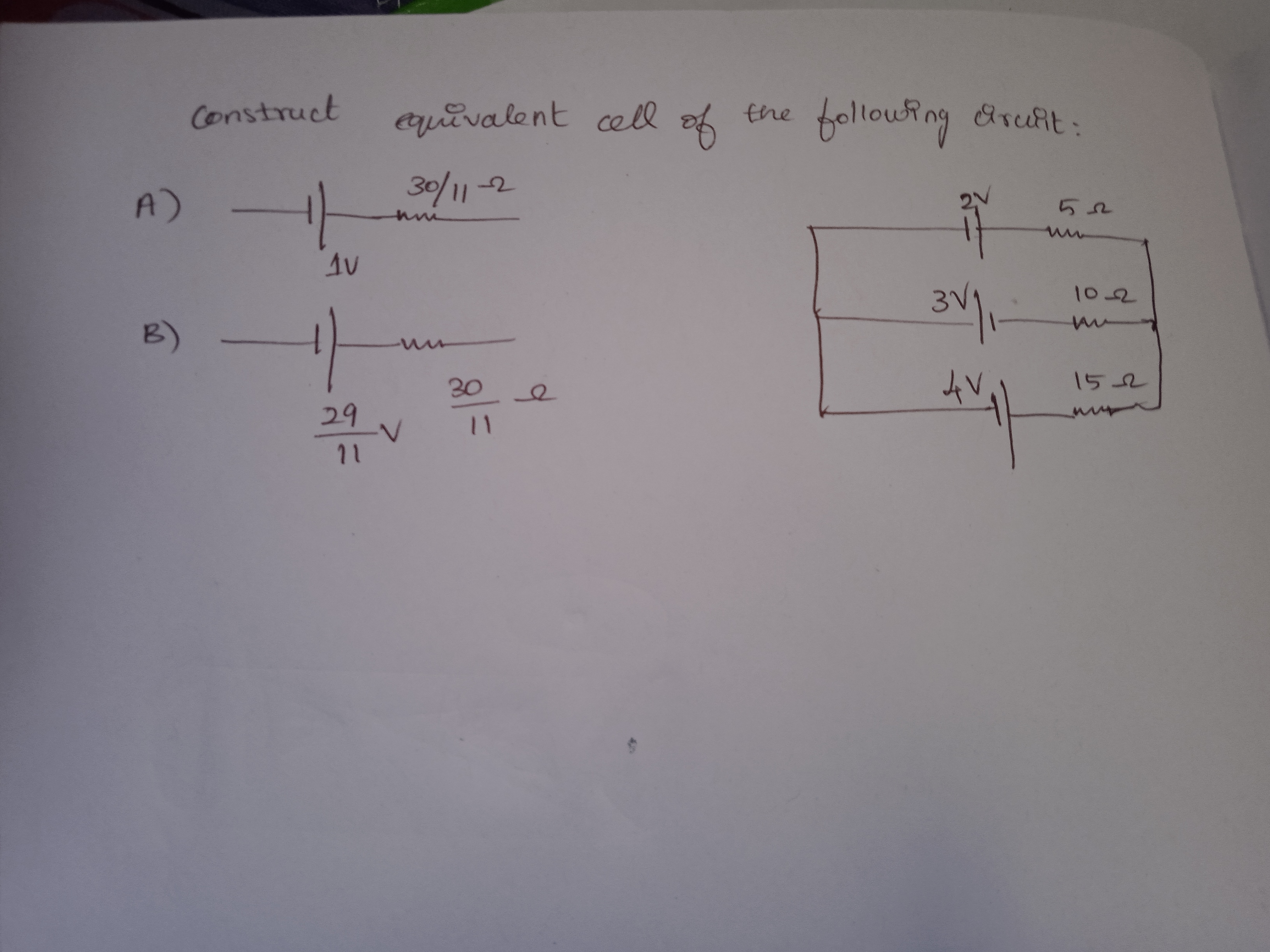Current Electricity
Current Electricity PDF Notes, Important Questions and Synopsis
SYNOPSIS
- Electric current: The rate of flow of electric charges through a particular cross section. The SI unit of current is Ampere.
- Ohm’s law: The current between the ends of a conductor is directly proportional to the potential difference applied across its end, provided all other factors remain constant.
V = IR - Dependence of resistance on various factors:
Resistance directly depends on length. Resistance is inversely proportional to area.
With an increase in temperature, resistance increases. - Current density: The amount of current flowing per unit area around that point, provided the area is normal to the direction of current.
- Drift speed, which is the magnitude of this velocity, is enormously small as compared to the thermal speed, which is not a vector and is much larger.
- Metals have low resistivity: Range of ρ varies from 10–8 Ω m to 10–6 Ω m.
Insulators such as glass and rubber have high resistivity: Range of r varies from 1022 to 1024 times more than metals.
Semiconductors such as Si and Ge lie roughly in the middle range of resistivity on a logarithmic scale. - When a conducting substance is brought under the influence of an electric field
 free charges (e.g. free electrons in metals) move under the influence of this field in such a manner that the current density
free charges (e.g. free electrons in metals) move under the influence of this field in such a manner that the current density  due to their motion is proportional to the applied electric field.
due to their motion is proportional to the applied electric field.
where σ is a constant of proportionality called electrical conductivity. - Temperature coefficient of resistivity:
For pure metals, resistance varies linearly with the rise of temperature.
-
Emf (electromotive force) is the name given to a non-electrostatic agency. Typically, it is a battery in which a chemical process achieves this task of doing work in driving the positive charge from a low potential to a high potential.
The effect of such a source is measured in terms of work done per unit charge in moving a charge once around the circuit. This is denoted by ε. -
Ohm’s law is obeyed by many substances, but it is not a fundamental law of nature. It fails if
- V depends on I non-linearly. Example: ρ increases with I even if temperature is kept fixed.
- The relation between V and I is non-unique. Example: GaAs
- The relation between V and I depends on the sign of V for the same absolute value of V.
- Kirchhoff's First Rule:
At any junction of several circuit elements, the sum of currents entering the junction must equal the sum of currents leaving it.
In the above junction, current I enters and currents I1 and I2 leave.
Thus, I = I1 + I2.
This is a consequence of charge conservation and assumption that currents are steady, i.e. no charge piles up at the junction. - Kirchhoff's Second Rule:
The algebraic sum of changes in potential around any closed resistor loop must be zero. This is based on the principle that electrostatic forces alone cannot do any work in a closed loop, because this work equals the potential difference, which is zero, if we start at one point of the loop and come back to it.
When applied to a loop as shown above (which could be part of a larger circuit), this gives
-(R1 + R2) I1 - R3 I3 - R4 I4 = 0. -
Points to remember in the case of current loops:
Choose any closed loop in the network and designate a direction (in this example, counter clockwise) to traverse the loop. -
Go around the loop in the designated direction, adding emfs and potential differences. An emf is counted as positive when it is traversed from (−) to (+) and negative in the opposite case, i.e. from (+) to (−).
-
An IR term is counted negative if the resistor is traversed in the same direction of the assumed current and positive if in the opposite direction.
-
Equate the total sum to zero.
-
The Wheatstone bridge is an arrangement of four resistances—R1, R2, R3 and R4. The null point condition is given by

This is also known as the balance condition. If, for instance, R1, R2 and R3 are known, then R4 can be determined.
-
In a balanced condition of the meter bridge,

σ: Resistance per unit length of wire
ℓ1: Length of wire from one end where the null point is obtained
A potentiometer is a device to compare potential differences. Because the method involves a condition of no current flow, the device can be used to measure potential differences and the internal resistance of a cell and to compare the emfs of two sources.
Related Chapters
- Physics and Measurement
- Kinematics
- Laws of Motion
- Work, Energy and Power
- Rotational Motion
- Gravitation
- Properties of Solids and Liquids
- Thermodynamics
- Kinetic Theory of Gases
- Oscillations and Waves
- Electrostatics
- Magnetic Effects of Current and Magnetism
- Electromagnetic Induction and Alternating Currents
- Electromagnetic Waves
- Optics
- Dual Nature of Matter and Radiation
- Atoms and Nuclei
- Electronic Devices
- Communication Systems

